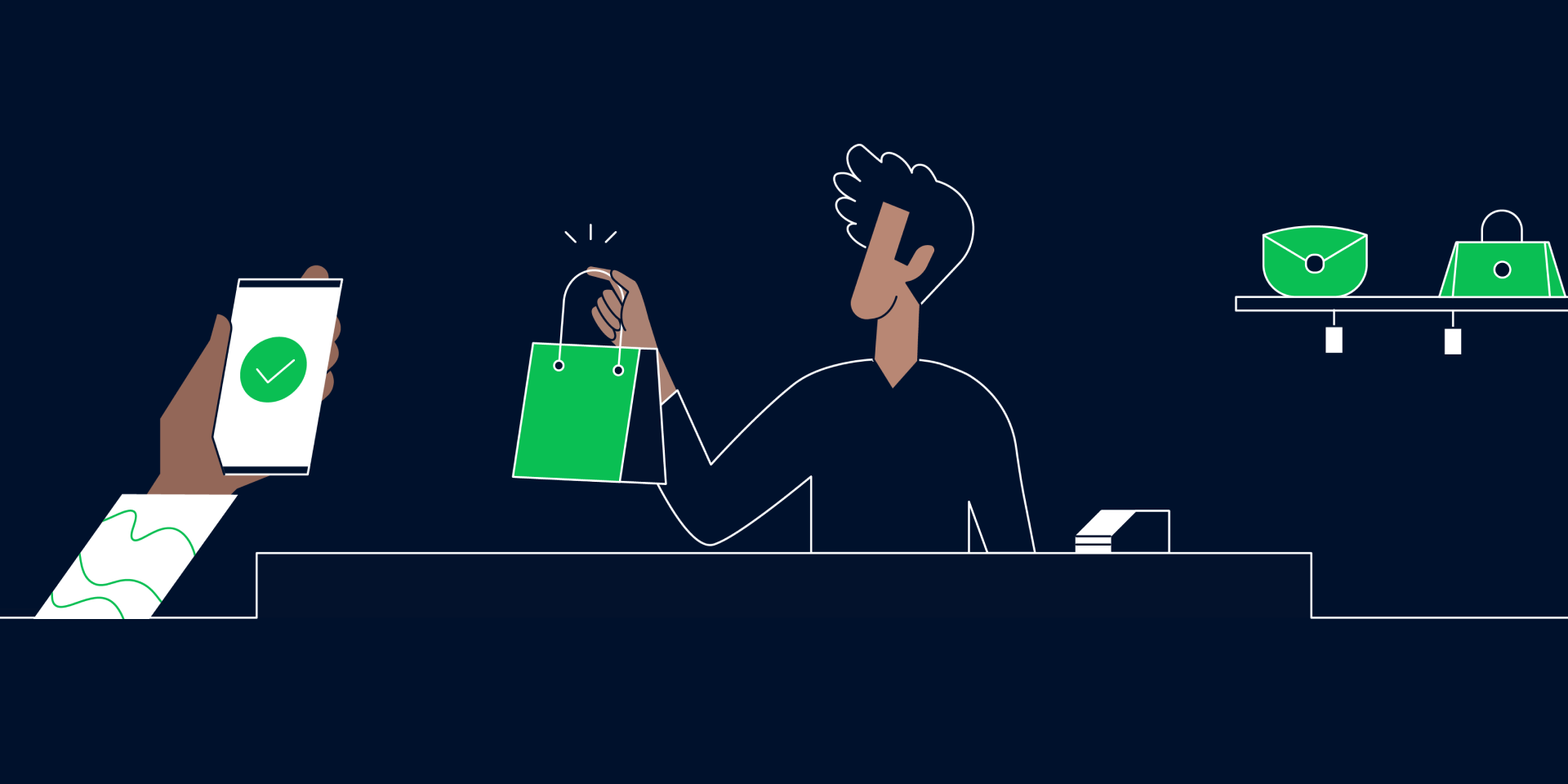If the pandemic taught us anything, it’s that in times of crisis and lockdown we needfreshly baked sourdough,hair dye, andclever home storage solutions. We also need pizza and coffee. Domino’s Pizza’s order value rose by 22% during the initial lockdown period in 2020. And Uber Eats reported a 149% increase in coffee orders during the same period.
The habits we formed during lockdown periods continue to shape the way we interact with food and beverage (F&B) brands. As hybrid and working-from-home became the norm, we’re less likely to pass our favorite café on a daily basis. Not surprisingly, consumer adoption of digital channels accelerated in response.
For the food and beverage sector, this upheaval turned things on their heads. Static brick-and-mortar stores reliant on footfall took a huge hit. Whereas businesses with an established online presence fared better.
To help you make sense of the landscape that emerged from the ashes, we created a report which combines economic analysis with consumer research, and real-life insights. You can take a look at the 2020 report here.
In the meantime, this article will walk you through three key takeaways from the report. To learn more about recent trends, check out the 2022 retail reporthere.
1. Customers want to be reassured
As businesses reopened in the summer after the first lockdown, many consumers were still reluctant to head out to bars and restaurants. Data from our survey confirmed that 29% of global consumers worried about person-to-person contact in restaurants. And 51% wanted businesses to use technology as a means of maintaining a safe distance. Payment terminals were also a big cause for concern for 54% of customers who expected to pay using contactless methods to avoid touching anything.
51% of consumers want businesses to use technology as a means of maintaining a safe distance.
None of these concerns were good for anyone’s appetite. So what did merchants do?
2. Accept contactless payments
Contactless paymentshave come a long way from simply tapping your card on a terminal. Near field communication (NFC) technology supports digital wallets such as Apple Pay and Google Pay™️. And, thanks to secure authentication methods like passcodes, fingerprints, and facial recognition, they’re not restricted to standard contactless transaction limits.
Another way of reducing contact that through self-service kiosks that leading Domino’s Pizza franchise, Daufood, implemented. As CTO Javier Pastor explained: “We installed kiosks in all stores for customers to place orders without going to the counter. We had some great feedback especially since people wanted to keep their distance.”

3. Support contactless delivery and collection
Like many food delivery brands, Domino’s Pizza saw a surge in delivery requests when the pandemic hit. And, in addition to delivering hot pizza fast, it had to ensure both driver and customer safety. Head of Marketing, Casper Mooyman explained:
“At the start of the pandemic, carry-out customers quickly became delivery customers. To ensure a safe distance, drivers placed pizzas in front of the door, ring the bell, and then stepped back. We also stopped cutting pizzas in store to avoid touching the food once it’s cooked.”
Joe & The Juice took a digital approach to social distancing by using its pre-order app to facilitate contactless ordering and curbside pick-up. As a result, the chain remained open throughout lockdowns. It also had the nice side effect that its app downloads soared. This, in turn, led to an increase in new customers, as VP of Strategy & Business Development Thomas Evald told us:
“We see these digital channels prevail beyond the pandemic. They’re safe and convenient. And convenience wins every time.”
“Concerns over safety accelerated the adoption of digital channels. And, once customers saw how convenient and safe the app was, they stuck with it. For example, once you’ve downloaded our pre-order app, you have your order history and your credit card details stored. So future orders are really easy. That’s why we see these digital channels prevail beyond the pandemic. They are safe and convenient. And convenience wins every time.”
4. Be flexible
They say necessity is the mother of invention. Which explains why so manyfood and beveragebusinesses displayed such creativity and ingenuity over the course of the pandemic. For most, this meant embracing digital for at least some part of the customer journey. Even small-scale players headed online, sharing menus and taking orders via Instagram or setting up local WhatsApp groups. Consequently, consumers got used to these digital interactions. It gave them more flexibility, letting them order however they wanted. After merchants showed they could do it, there was no going back. Our survey revealed that 73% of customers felt that businesses should retain theirmultichannel offeringsafter the pandemic.
The Joe & The Juice app offered a new dimension to the experience for customers. The freedom to order from wherever suits them. And, since all payments connected in the backend, they could collect loyalty points directly via their payment method. As Thomas said: “It’s important to give customers total flexibility. They can pre-order in app, they can order in store, they can pay via the terminal or in app. It's really their choice."
73% felt that businesses should retain their multichannel offerings after the pandemic.

5. Be centralized
Agility became increasingly important. There is still no time to waste in the race to digitalize your business, connect your channels, and access all your data in one place. As Thomas from Joe & The Juice said: “It’s critical to own your own data so you’re not dependent on other providers. With Adyen, we get that data. Other providers have separate systems where you can see the data, but you can’t link it. That’s a problem for a lot of people. They have a system built from different parts and they can’t really see what they’re doing.”
Better customer insights
Joe & The Juice started using centralized payments data to build a 360-degree view of its customers. So, when a customer downloaded the app and added a payment method, all historic transaction data was automatically connected to the account. Even if they were new to the app, the messaging was adapted to how long they’d been a customer.
"By linking our app to the credit card terminal, customers got greater transparency of their purchases, messages, and rewards in the app,” said Thomas Evald, VP of Strategy & Business Development. “On the other hand, we gained a clearer understanding of who our customers were and how we could provide them with better service and products. That was amazing for us.”
Better business insights
Daufood operates across several channels: Ecommerce, in-app, stores (which include self-service kiosks), and a call center. With so much potential for complexity, it was a real game-changer to have a single view of everything in one place. As CTO, Javier Pastor said: “When you’re running hundreds of stores across different regions, a single payments partner makes reconciliation so much easier.”
"Unified commerce means we have a one-stop environment for franchisees to better understand what money they’ve made from which channels.”
Domino’s Pizza had to find the right balance between a centralized overview and localized insights for its franchisees. It found unified reporting to be a powerful asset, as Casper explained: “We wanted to offer our franchisees the best tools to run their businesses. If you split out your online and in-store payments you have all these different systems and tools and reports from which the franchisee must collect the revenue per day, often all by themselves. Unified commerce means we have a one-stop environment for franchisees to better understand what money they’ve made from which channels.”

It’s not too late
A report by McKinseyclaimed that, in terms of innovation, we jumped 10 years in the first half of 2020. Which sounds about right. That said, it’s never too late to act and adopt a unified approach to commerce. As Javier of Daufood said: “Quality and service times are critical and you need the right technology to support this. Many are trying to roll out projects that have been in the backlog for a long time and they now have to run. Digitalization projects must be prioritized. Otherwise, you lose your slot. It’s always been important, but now more than ever. The window is closing. Ultimately, we must use this upheaval as an opportunity to accelerate the changes that will provide better experiences.” Casper from Domino’s Pizza agreed: “There is still time, but not long. Work fast to build these capabilities. It’s not too late, but it will be soon.”
"It's not too late, but it will be soon."
Read the 2022 retail report
10,000 businesses. 40,000 consumers. Access our latest global research into the key trends, behaviors, and payments innovation shaping the retail industry.
Read reportFresh insights, straight to your inbox
By submitting your information you confirm that you have read Adyen's Privacy Policy and agree to the use of your data in all Adyen communications.
